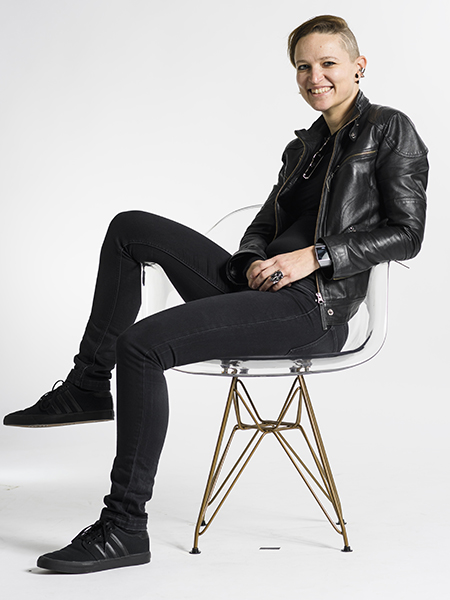Frueh identifying objects in space by using light

A professor in the School of Aeronautics and Astronautics is working to identify objects in space by using light.
Carolin Frueh, with her Space Information Dynamics research group, uses data collected by optical telescopes, including her own Purdue Optical Ground Station, to study brightness in objects over time. Observations of brightness variations over time form a “light curve.”
About 23,000 space objects have been catalogued, according to the U.S. Strategic Command, and more than 97% are space debris objects. Some orbital information is available for those objects, but no further information about their current state is available. Objects that are not in the catalog are currently unidentified. Frueh’s group is working to change that with new methods that combine objects’ orbital information and additional characterization information, such as shape, attitude and materials.
To better categorize objects, Frueh is measuring brightness to get details that could reveal what kind of object it is.
“It’s a highly under-determined problem,” said Frueh, an assistant professor who is working under a $375,000 grant from the Air Force Research Lab.
Aiding in that research is a considerable catalogue of data, recently endowed by the University of Bern. The university in Switzerland has done observations for more than 20 years, allowing it to compile a unique database of objects that aren’t catalogued elsewhere, including a long-term time history, Frueh said.
Frueh is using that complete history to determine objects.
The telescopes collect non-resolved data, so images mostly are “blobs.” Determining the shape of an object provides a lot of information, but that isn’t easy. Objects have sharp edges, different materials and can self-shadow on parts.

A single brightness measurement doesn’t tell anything, but a history of the brightness over time helps paint a broader picture of the object buried in light curve measurements.
“I can tell you right away if it’s spherical and if it’s stabilized to the sun. Then it gets more complicated when you say, I want to know beyond that. What exact satellite is it? Or it’s not stable, how is it tumbling? And what’s the exact shape? Because you’re measuring only one quantity,” said Frueh, who is attacking the problem with her research group that includes PhD students Alexander Burton, Siwei Fan, Alexander Friedman and Daigo Kobayashi.
As the object moves, a different brightness is reflected to the telescope. When it’s illuminated by the sun, the telescope collects the light it’s getting back. All of that data is used in a computational inversion model to determine the object’s shape properties.
But it takes significant amount of time to run simulations. In classical computer science, each flat surface gets two triangles, Frueh said. But to make it physically correct with various shadow casts, all of the facets have to be the same size. And there could be 12,000 facets for one triangle, she said.
The rendering of the physical reflections has been developed from scratch by Frueh’s group. In solution to the problem of light curve inversion for shape, the physics of light reflection and the telescope system are connected with techniques originating in computer science and classical mathematical theories of polytopes and topology.
Working to solve complex problems is exactly why Frueh ended up in this field and in aerospace engineering.
Her master’s degree is in theoretical particle physics, but as she was considering Ph.D. positions, she didn’t want to do that the rest of her life. As she was considering other focuses, she heard for the first time about the space debris problem.
“I was just hooked,” she said. “It has nothing to do with particle physics, but I made the switch.”
The University of Bern essentially runs the optical space debris business for the European Space Agency, Frueh said, and that’s where she chose for her Ph.D. work. While at Bern, Frueh worked with optical telescopes and tracking space debris.
Since, she’s been locked in on space situational awareness and astrodynamics for a simple reason: “Because it’s hard,” she said with a laugh.
A lot of the classical assumptions don’t work in identifying space debris as they would in astronomy because there are not uniform surfaces, she said. In astronomy, though a moon, asteroid or planet has craters and valleys, it’s generally uniform. It can be modeled with, more or less, one material. There are longer timelines for observations, too, within one orbital revolution.
“For us, all of that doesn’t work,” Frueh said. “If you look at a satellite, it has a plethora of materials. It has sharp edges. It’s not convex at all, so it makes a shadow on itself. We are fast. In low-Earth orbit, we have 90 minutes, and then we have another orbital revolution. You have to be able to react fast. So it has all the good stuff. Everything that makes it hard, basically, we have at our disposal.
“So I think it’s awesome.”
